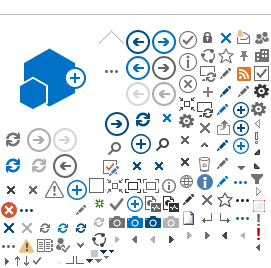Peat swamp forests are forest ecosystems developed on un-decomposed and partly decomposed organic matter that has raised the peaty soil into a dome of which the top is above the normal flood level. The accumulation of un-decomposed organic matter can be attributed to water-logging and high acidity that restricts the presence and activity of decomposer organisms. Peat swamp forests are also characterized by poor soil nutrients due to continued leeching through surface run-off.
This forest ecosystem is believed to be an important carbon sink because of the huge amount of carbon sequestered from un-decomposed organic matter that the ecosystem has accumulated over so many years.
Peat swamp forests are the second most dominant forest type in the country covering around 90,884 hectares or 15.6% of the total land area. The most extensive peat swamp forest is found in the Belait district and continuous with the peat swamps of the Baram basin over the border in Sarawak.
Transitional Mangrove-Peat Swamp Forests
This forest is the distinctive zone between the
mangroves and the peat swamp forests marked by the limits of inundation
by tidal saline water. This is clearly defined with mangrove or
semi-mangrove species being replaced by species that are intolerant of
brackish water. Old trees of 'bakau minyak' (Rhizophora apiculata) and 'lingadai' (Bruguiera gymnorhiza) occur close to the boundary but at the extreme limits of inundation, transition species, such as Myrsine umbellata, 'manyam' (Glochidion littorale), 'tukil-tukil' (Allophylus cobbe), 'ipil-ipil' ( Instia bijuga) and 'rasau' (Pandanus affinis) are more common. Palms such as 'melawaring' (Cyrtostachys renda) and 'silad' (Licuala spinosa) are also abundant with occasional clumps of 'asam paya' (Eleiodoxa conferta).
'Ramin-Pulaie' Association
This is a type of peat swamp forest where 'ramin' (Gonystylus bancanus) and 'pulaie' (Alstonia pneumatophora) are predominant species.
'Jongkong' Forests
This
type of peat swamp forest can be found in patches along the Tutong
river. It is characterized by gregarious stands of 'jongkong'
(Dactylocladus stenostachys) trees.
'Terentang' Forests
'Terentang'
forest represents the early development stage of peat swamp forests.
This forest is commonly dominated by 'terantang' (Campnosperma
coriaceum) and be seen in fragmented areas in Tutong and Brunei-Muara
districts along the shallow peat of low tree density.
'Alan' Forests
'Alan'
forest, dominated by 'alan' or 'seringawan' (Shorea albida) can be
found in vast areas along the Belait drainage. The dominant and
gregarious 'alan' trees have been designated an endangered species by
the World Conservation Monitoring Centre. Observed from above, the even
canopy of the 'alan' forest gives the appearance of a field of
cauliflory with only a few species of understorey trees.
'Alan Bunga' Forests
'Alan
bunga' forests are characterized by dense high canopy Shorea albida
trees comparef to 'alan' community described above. 'Alan' trees in
this forest have a medium-sized crown and can be observed to be growing
with other species such as 'keruntum' (Combretocarpus rotundatus) and
'ramin' (Gonystylus bancanus). Other species like 'meranti kerukup'
(Shorea pachyphlla), 'bintangor' (Calophyllum spp.) and 'nyatoh ketiau'
(Madhuca curtisii) can be observed.
'Padang Alan' Forests
This
is an 'alan' forest characterized by denser canopy and relatively
smaller trees compared with 'alan' forests described above.
'Padang' Mix Forests
An
'alan' forest mixed with patches of non-arboreal 'padang'. This mixed
'padang'community can only be found in the Baram/Belait peat swamp
complex. Dominant species group represent a Shorea
albida-Litsea-Parastemon association with other typical 'padang' species
such as 'keruntum' (Combretocarpus rotundatus), 'bintagor kuning'
(Calophyllum ardens), 'medang' (Litsea crassifolia), 'rengas' (Gluta
macrocarpa) and 'geronggang putih' (Cratoxylum glaucum).
'Padang Keruntum' Forests
'Padang
keruntum' forests can be observed in the extreme headwaters of Sungai
Pandaruan, as well as in Sungai Mendaram. The forest is almost entirely
open with the swamp surface exposed. All species, both arboreal and
non-arboreal are stunted. Small 'keruntum' (Combretocarpus rotundatus)
trees occur frequently, and 'jongkong' (Datycladus stenostachys) and
'kandis' (Garcinia cuneifolia) trees are abundant.


